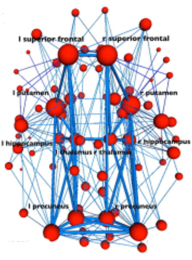Monday, 4 December 2023
The “rich club” of networks in the human brain
 What is known as the “rich club” in the human brain consists of densely interconnected regions of neurons that show little plasticity. The activity of these networks is highly stable , and the regions involved are rapidly informed of other neuronal events that occur throughout the brain . The neurons in this “rich club” may be regarded as one end of a continuum in terms of their low plasticity and the many connections that they make with other parts of the brain. The other end of the continuum consists of neurons that show a high degree of plasticity but are connected to relatively few other neurons and have a far lower level of activity. Along this continuum, just about every other possible combination of these traits can be found. It has been estimated, however, that the “rich club”, while accounting for only about 20% of the total population of neurons in the human brain , also accounts for nearly 50% of its total activity !
What is known as the “rich club” in the human brain consists of densely interconnected regions of neurons that show little plasticity. The activity of these networks is highly stable , and the regions involved are rapidly informed of other neuronal events that occur throughout the brain . The neurons in this “rich club” may be regarded as one end of a continuum in terms of their low plasticity and the many connections that they make with other parts of the brain. The other end of the continuum consists of neurons that show a high degree of plasticity but are connected to relatively few other neurons and have a far lower level of activity. Along this continuum, just about every other possible combination of these traits can be found. It has been estimated, however, that the “rich club”, while accounting for only about 20% of the total population of neurons in the human brain , also accounts for nearly 50% of its total activity !
The characteristics of the neurons that form the “rich club” may well contribute to the human ability to take action quickly in any new situation by drawing analogies with similar situations in which a behavioural response of the same kind has usually proven effective. These internal models (sometimes called <i models in the literature) may be “hard-wired”—already in place when we are born or formed very early in our lives—because they represent regular patterns in the world that are almost universal: for example, if you let go of an object in thin air, it falls downward, and if you hide an object behind a screen, the object will still be there when you take the screen away.
From the Simple to the Complex | Comments Closed








